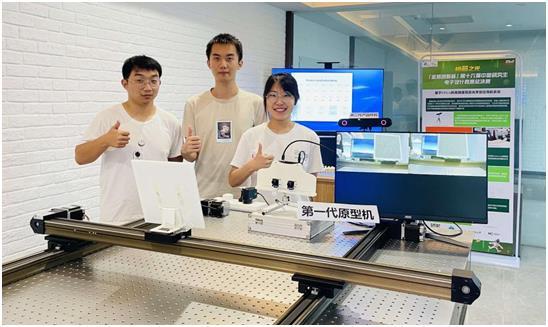SUSTech graduates awarded second prize at 16th China Postgraduate Electronic Design Competition
Aug 17, 2021
On August 13, 2021, the 16th China Postgraduate Electronic Design Competition was held online. There were 427 teams from more than 150 participating units across the country that participated in the online competition.
Ao’ran XING, Xuehai LI, and Suqin CHEN, three graduate students from the Department of Mechanical and Energy Engineering (MEE) at the Southern University of Science and Technology (SUSTech), were awarded the second prize in the national finals.
Wei LIU, Research Associate Professor from MEE at SUSTech, guided the students throughout the competition for their project, entitled “High-precision stereo positioning and navigation system based on ZYNQ FPGA.” In the previous divisional round, the team advanced to the national finals by winning the first prize in the South China division.

Their award-winning project developed a high-precision binocular optical positioning and tracking system based on embedded FPGA on near-infrared wave-band reflection imaging technology, realizing sub-millimeter-level and real-time pose calculation of surgical instruments. The stereo positioning and tracking system is composed of a navigator, a host computer, and a display device. The relevant algorithmic research paper has been awarded the Best Paper Award at the International Conference IEEE ROBIO.
High-precision positioning technology, one of the important guarantees for successful operation in robot-assisted orthopedic surgery, can locate the relative position of the lesion and the surgical instruments. Furthermore, it can correct the operation path in real-time, assisting the surgical robot to improve the accuracy of surgical operation.
The China Postgraduate Electronic Design Competition was jointly organized by Tsinghua University, Huawei, and the Chinese Institute of Electronics (CIE) since 1996. It aims to actively promote the reform of postgraduate training mechanisms, improve graduate innovation and practice capabilities, and promote the deep integration of industry, education, research development, and talent selection.
Latest News
Related News












